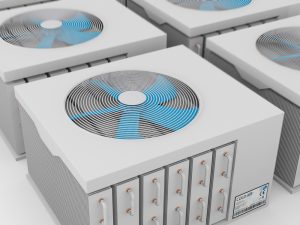
Knowledge Base / News
No IT manager wants to get that early morning text on a Monday notifying them that employees can’t access their data for inventory, stock, payroll, you name it. Crashed servers usually end up being the culprit, and the realization that things are about to get worse usually comes as soon as the data center or server room door is opened and the blast of hot air hits everyone.
We often get calls from new clients who have experienced this exact scenario – a heating or cooling problem occurred over the weekend, leading to crashed servers, lost data, and extremely frustrated employees and clients.
The biggest issue is that companies in this situation are being reactive; the downtime has already happened, causing revenue loss and confidence loss from their clients. It would be far easier to proactively monitor the environment in their data center, server room, or IT closet to help warn them of problems before they happen.
 Protect your investment
Protect your investmentBusinesses, especially SMBs, are heavily reliant on their IT infrastructure. Servers, computers, networks, peripherals, and phone systems are critical for day to day operations. Even with the migration to the cloud, organizations still rely on their local network to access their data stored offsite, and many will maintain a local copy of their data for redundancy and ease of access.
TechTarget estimates that the average small business (one with revenue of less than $50 million) spends 6.9% of their revenue on IT. If your organization earns revenue of $10 million, that’s nearly $700,000 per year spent on IT and technology.
If your business is spending that much every year, wouldn’t you want to protect that investment?
Monitoring your environment with Room Alert does just that – it allows you to quickly identify environmental factors that have the potential to cause downtime and revenue loss for your company. Being proactive and monitoring environment conditions is far better (and costs far less) than being reactive and needing to repair or replace expensive equipment and data.
Industry analysts like Gartner and Forrester have shown that nearly 30% of outages are caused by environment issues. Those factors include situations such as
CIO Insight reports that employees can only work at 63% of productivity when outages like this occur, leading to reduced employee morale and customer loyalty. Too many organizations think that because they are monitoring the uptime of their servers and hardware (or their outsourced MSP is covering that as part of an overall maintenance package) that they are covered.
 What these businesses don’t realize is that they’re only monitoring for the end result of an issue. If a broken HVAC in the middle of a heat wave occurs, the business still has to deal with the aspect of potentially replacing servers and losing critical data.
What these businesses don’t realize is that they’re only monitoring for the end result of an issue. If a broken HVAC in the middle of a heat wave occurs, the business still has to deal with the aspect of potentially replacing servers and losing critical data.
Wouldn’t it be far better to monitor the environment factors that could lead to downtime, and address them to help prevent the issue from happening in the first place?
By monitoring and logging environment factors such as temperature, humidity, flood, power, smoke, and more, organizations can track trends and easily identify and defend against situations that may lead to problems.
Reporting and mapping issues such as gradually rising temperatures can be the precursor to an HVAC failure; identifying this trend can help you enact repairs to the HVAC, rather than needing to repair crashed servers.
Further, even in a worst case scenario, should your HVAC fail Room Alert will notify you of the immediate temperature and humidity changes in your data center or server room. As soon as you receive the alerts via email and SMS, you can take action to help prevent the conditions that would lead to crashed servers, lost data, and downtime. Again, it’s far better to prevent the situation than to have to recover from it entirely.
If your organization is not currently monitoring environment factors in your facility, you’re missing 30% of the downtime causes that can impact your business. When you are faced with an issue like a broken HVAC or leaking roof, your notification won’t be from your Room Alert environment monitor; it will be from panicked employees struggling to help customers.
Don’t be reactive like too many customers that call us after the fact. Install Room Alert in your facility today to protect your IT investment, your data, and most importantly, your company’s ability to earn revenue and stay in business!

You may find Windows Command Prompt at the following path:
To run Windows Command Prompt as an administrator:
| Current S models | Current E models |
|---|---|
| Room Alert 32S | Room Alert 32E |
| Room Alert 12S | Room Alert 12E |
| Room Alert 3S | Room Alert 4E |
| Room Alert 3E | |
| S models | E & W models |
|---|---|
| Room Alert 32S | Room Alert 32E |
| Room Alert 12S | Room Alert 12E |
| Room Alert 3S | Room Alert 4E |
| Room Alert 3E | |
| Room Alert 3W |
| Model |
|---|
| Room Alert MAX |
| Room Alert 32S |
| Room Alert 12S |
| Room Alert 3S |
| Room Alert 32E/W |
| Room Alert 12E |
| Room Alert 4E |
| Room Alert 3E |
| Room Alert 3 Wi-Fi |